I have to admit I spend a great deal of my life in the horizontal position! I sleep a good 8-9 hours a night and then I wake up to read for another 1-2 hours each morning before I get out of bed… (lucky me, I know!) After my last post on the World in the Whale, I thought I’d be writing this essay right away or at most, a week later. But I didn’t, once again letting it go for a month, while daily life took its course with my granddaughters filling some days, reading and biking and walking filling most of the others. I made it downtown to a climate protest last week and enjoyed running into several old friends there. But the big street murals and youthful activists who painted them blurred into the background, another in a long line of these kinds of protests. I suppose there are some people there who are having their first-ever experience and feeling energized and motivated afterwards. But for an old jaded guy like me, it was unremarkable and unmemorable in spite of my hope to be supportive and in solidarity with the activists there.
I’ve characterized my areas of interest for years as “organic communities, horizontal communications, and public space”—work, technology, nature, San Francisco and urbanism more generally, also preoccupy my attention. All of these topical concerns are for me, ways of trying to understand how radical change starts, and how it might go beyond the obvious and painful limits so far achieved historically.
I’ve written several posts in the last years that went into some depth on my current thinking about revolution, historical agency, and our elusive hopes for urgently needed radical social, political, and economic change… I found myself listening to a number of podcasts on the 10th anniversary of Occupy Wall Street, which we experienced in the Bay Area primarily through the dynamic Occupy Oakland. Those heady months in late 2011 were so exciting at the time. It was difficult to digest how completely it all seemed to fade away a year later. Now, a decade on, along come these audio programs to promote the idea that the Occupy movement set the stage for Bernie Sanders’ campaigns in 2016 and 2020, the rise of the Democratic Socialists of America (DSA), and the myriad local candidacies for city councils, sheriffs, etc., from left-leaning politicians. I found it a bit jarring to hear most of these podcasts (from The Dig, Belabored, Upstream, Economic Update, and Start Making Sense, all funded by the Rosa Luxemburg Foundation’s New York office) present a common theme of social-democratic initiatives being the primary legacy of the Occupy movement. There were a few anarchist voices, especially on the Upstream contribution, but overall, you’d think most people involved in the thousands of public squares all came out of it determined to build a left electoral machine!

To be sure, there are many reasons to be critical of the anarchist style of horizontalist politics that was so prominent during Occupy, at least as many reasons as there are to be critical of the party-builders, the electoralists, and the social democrats. And that’s where this very smart book by Rodrigo Nunes comes into focus, Neither Vertical Nor Horizontal: A Theory of Political Organization (Verso: 2021). I highly recommend it, but you have to be ready for a book that delves into serious philosophy and how it shapes our political assumptions and behaviors. I don’t think it’s far-fetched to characterize it affectionately as “self-help for revolutionaries.” Much of what he analyzes, in my opinion, has gone unexamined for decades, which is why I found it so refreshing and even inspiring.
Ultimately, Nunes’ project is to dissolve the peculiar immobilization that besets a great deal of the left. He is trying to emphasize paths that break with the unspoken assumptions and commitments that bind two kinds of leftist, each using their criticism and anger towards the other as an explanation for the general failure of the left, but because it’s the “other’s fault” there is little need for introspection or changing one’s own approach.
…both sides end up constantly demarcating their mutual difference through the reiteration of terms that function as the negation of one another: unity, centralization, concentration, identity, closure, the party-form; multiplicity, connection, dispersion, difference, openness, the network-form (or no form at all). That, of course, only makes self-criticism less likely.
p. 61
…this opposition does not appear to lead to a full-blown rupture (‘the breakdown of the whole system’), arguably for three reasons. First, because the two perspectives not only share a common defeat, they also identify themselves before others as part of a single camp (‘the left’), like an unhappy couple, they continue to live under the same roof even as they lead mostly separate lives. Second, because the fight over their common identity (the mantle of ‘the true left’) keeps them tied to each other, even if around an antagonism; if they continue to live under the same roof, it is because they are permanently fighting over who should keep the house. Third, they effectively need each other, not only because their identities depend on mutual opposition, but because the presence of the other offers them exemption from responsibility for their own mistakes.
p. 64
Nunes characterizes this opposition as the double melancholia of the left, which I found quite resonant. For him, the two leftist camps are anchored to the two major upheavals of the 20th century. In the case of the “verticalists” they are anchored in the Russian Revolution and its many successors. For the “horizontalists” it’s 1968, and the worldwide upheavals of that era. I’ve been in the horizontalist camp since the 1970s when I first came of political age, in the direct wake of the 1960s upheavals, and while the Soviet Union and Maoism were both still very influential on the U.S. left. My initial embrace of anarchism soon gave way to a more libertarian Marxist approach, which seemed more serious and more theoretically coherent than what the (usually very young, like myself at the time) self-proclaimed anarchists I knew were promoting.
I helped start Processed World magazine and spent the 1980s publishing it three times a year, all the way to 1994. People in AFL-CIO trade unions certainly thought we were anarchists (if they noticed us at all), but folks in the remnant Industrial Workers of the World (IWW) along with anarchist publishers like Fifth Estate, saw that we weren’t adherents of their philosoph(ies) either. Processed World was an eclectic magazine politically and stylistically that sought to connect people in workplaces and across industries to reject the stupidity of the modern world, especially its relationship to work. It was there that we inaugurated such memorable front groups as the Committee for Full Enjoyment, Not Full Employment, the Union of Time Thieves Local 00, and the Anti-Economy League of San Francisco, all of which made appearances across the world, from Eastern Europe in 1990 to Seattle in 1999. Some of us also helped launch Critical Mass in San Francisco in 1992, and were already writing about bicycles and politics in the pages of the magazine a couple of years before that.
Through all those years, Processed World always remained an open collective that nearly anyone could wander into and become a contributing member with little screening, nor any particular agreement from them on any principles or ideas. This was due to our utter abhorrence of formal organization and our belief that most people could easily grasp what we were doing and why, and embrace our agenda from whatever particular place they were coming from (even if our agenda remained quite vague and open-ended). At several points we had bitter disputes about our identities, how we presented ourselves to the public, and how we organized ourselves internally. A memorable debate took place between an anarcho-syndicalist writer who was part of our group for a couple of years, and believed that we should have formal positions (managing editor, publisher, art director, etc.) and they should be elected by the collective members, who in turn should also have specific commitments that established their membership and voting rights. It all seemed so tiresome and bureaucratic to a number of us that we outvoted him and no such structure was ever established. But some of us did perform those functions and in my case, I was probably the de facto publisher for nearly all those years (or as I preferred to refer to my role, “shit worker of last resort”).
This experience exemplifies some of the points Nunes makes in his book.
… the initiation of collective behavior always creates power differentials (different capacities to influence the possible actions of others) and depends on other differentials in order to propagate.
p. 285
… to simply decry the incipient formation of organizing cores as the moment in which a self-appointed elite expropriates a self-organizing process is at once to forget the role that organizing cores play in shaping those processes and to ignore the fact that their crystallization is an emergent product of self-organization itself.
p. 186
We definitely existed with power differentials inside the collective process at Processed World. But that differentiation was inevitable given the differences of time spent, prior experiences, abilities, and willingness to learn new tasks. Since we operated with no money, no paid staff, no advertising, etc., the reward of being part of the process was IT. There was no other reward, beyond feeling you were part of something interesting, something cool, something subversive and even revolutionary. At some point, inspiring (or discouraging) new volunteers was WORK done by older veteran participants, a task that nearly always went unrecognized.
Our political orientation was anti-authoritarian, and like many on the anarchist and libertarian Marxist left, we were extremely hostile to existing parties, unions, states (the Soviet Union was obviously to us a state-capitalist regime, and China was too, as later history amply proved; Cuba stubbornly held a lot of people’s sympathies due to its proximity to the U.S. and its ability to stake out a quasi-independent path, but ultimately they too were another Stalinist state). Some of the Processed World collective members had backgrounds in other obscure ultra-left groups, but most had cut their teeth in the anti-nuclear, anti-war movements of the early Reagan period, or feminist or gay organizing, while others came out of the anti-apartheid movement or from the Third Worldist campaigns to defend the left-wing movements in Central America. Most of these movements of the late 1970s and early 1980s had formal organizations run by paid staffers, but the rank-and-file were often self-organized in small “affinity” groups. Our politics were ultra-left in that we were unambiguously opposed to capitalism, wage-labor, and the state, but we found affinity with other anti-authoritarians in various anti-war, ecological, feminist, gay, and independent labor movements.
By the time Critical Mass began in September 1992, we had gone through the mass protests against the first Gulf War and the invasion of Iraq, as well as several years of tepid annual marches demanding “Peace, Jobs, and Justice” (which we referred to amongst ourselves as “peace, jobs, and boredom”). The formal organizations that convened these semi-regular political demonstrations were held in disdain (at best) by us and most of the people we knew, but we all turned out for the marches anyway. The Gulf War protests saw a surge of participation that was often self-organized outside of the previous leftist groups, which was exciting. A squad of 50 bicyclists rode up the coast from Santa Cruz to protest the war, and other cyclists turned up as scouts ahead of various marches crisscrossing the City during the days ahead of the start of the invasion of Iraq in 1991. Using bicycles for mobility and tactical flexibility in a political context was already being tried out by various individuals and affinity groups a year before Critical Mass began.
Critical Mass started as an informal “organized coincidence” from its inception. In the first few months, a number of people produced flyers and stickers and buttons, which we quickly dubbed “xerocracy” wherein anyone could be a xerocrat—just find an untended copying machine and start turning out copies of your ideas and designs and hand them out freely at Critical Mass. Anyone, we argued, could influence the direction of the monthly event. That was partly true, but it was also true that our office at 7th and Market in the Grant Building was ground zero for everyone interested in participating in Critical Mass, and it quickly became the place where we gathered ahead of the monthly “coincidence” to imbibe drinks and smoke and share ideas and debate tactics. We also started publishing a newsletter each month, the “Critical Mass Missives” where we collected reports from far and wide as the event began to reproduce itself across the U.S. and the world. Critical Mass was loudly proclaimed as a leaderless event; whenever anyone asked, we’d always say it was an “organized coincidence,” but behind the scenes we knew almost all the people who were helping maintain the spirit and cohesion of the experience. As I witnessed other Critical Masses in cities as diverse as Bologna and Rome in Italy, or New York, or Chicago, there were different degrees of semi-formal organization, sometimes with individuals in matching t-shirts doing corking, riding at the front and choosing the route, etc. Much later when people tried to give me a lot of the credit for Critical Mass (in that way that our culture wants to find the exemplary individual to credit for collective actions), I always pointed out that not only had San Francisco’s Critical Mass been a product of dozens of people, but every other city in the world had reinvented the experience for itself, usually with a group at least a dozen strong in each of those cities.
It is worth noting that San Francisco has become a much more bicycling friendly city since we launched the mass seizure of the streets almost 30 years ago. Now the city is crisscrossed with protected bikeways, bike parking racks are ubiquitous, “bikeshare” rentals are widely available, and there has been at least a ten-fold increase in daily bicycling over these decades. There can be no question that the impetus for these changes was rooted in Critical Mass, even if the liberal activists in the mainstream bike advocacy group take all the credit. But it goes to show that the kind of innovative, swarming, “unofficial” political action embodied in Critical Mass transformed the urban environment in San Francisco, but also in dozens of other cities that have followed a similar trajectory.
Missed in ten-year retrospectives on the Occupy movement was the decades-long evolution of anti-authoritarian political behavior. When the Turtles and Teamsters united to oppose the WTO in Seattle in 1999, San Francisco activists helped organize it in the months prior by traveling up and down the west coast encouraging union locals, anarchist affinity groups, immigrant rights groups, agricultural activists, etc., to come and participate together in an unprecedented combination of groups, demands, ideas, and tactics. Some of this had already been tried on a small scale during two years of “Reclaim May Day” in San Francisco that brought together over a dozen groups each year in an unpermitted march and demonstration that involved multiple street-theater performances and site-based protests during the course of the day. During a summer 1999 global anti-capitalist protest called for by British activists, San Francisco’s Montgomery Street was “tied up” by an anonymous group who strung neckties and caution tape back and forth across the street closing it to traffic (using the police attention to an announced march blocks away to help get away with it). This tactic reappeared in Seattle on November 30 at the WTO blockade.
Similarly, one long-time cycle activist who was traveling around the U.S. during the proliferation of Occupy camps in most cities and many towns kept encountering Critical Mass cycling veterans at the heart of many of those camps. These were people who had spent years learning how to organize horizontally and in the heat of the moment during mass bike rides that often faced great hostility from motorists and police. To make sense of Occupy as the widely embraced phenomenon it was, one has to connect it to this much longer history of self-organizing that stretches back at least to the 1980s and really to the 1960s and 70s.
… [the shadow of] historical trauma, above all the one associated with twentieth-century totalitarian regimes and the tarnished legacy of actually existing socialism … has hung over anti-systemic movements long enough to instill a mistrust of structure, discipline and collectivity which, combined with the growing atomization of social life and the ideological naturalization thereof, has become permanently woven into the ambient mood of our time.
p. 37
the crisis of revolution is also a crisis of the subject of revolution: not only of what had been held as its subject by right (the proletariat), but of the very idea of a subject by right (transitivity), of its de facto, organized subject (the party), and of the thought that such a thing as an organized collective subject was desirable. Did the historical record not show that the organization needed to make the revolution was ultimately the same thing that prevented it from achieving its goals? That is where the trauma of organization comes in.
p. 112
The answer for many of us to this trauma has been to resist organization (even if we’re pretty good at organizing ourselves among our trusted friends). Political organization came to mean at best bureaucratization, but at worst, a turn towards authoritarian hierarchy that would undercut whatever popular mobilization was underway, and inevitably lead to self-defeat. It’s not an unreasonable conclusion to draw from the persistent descent into decay and destruction that seizing states or unions from within has consistently led to. But this worry has become its own obsession, as Nunes argues so convincingly. First of all, it’s true that
The individuals who will take to the streets over the next years have been shaped to a greater or lesser extent by market discipline and neoliberal desire, atomization and negative solidarity, the vilification of organized labor and minorities, debt and endlessly reheated Cold War propaganda. If this does not make them necessarily reactionary, it does not make them naturally radical either.
p. 280-81
For many of us who have forsworn formal organization, we unconsciously accept the idea that somehow people will organize themselves, either through countless individual and small group activities, or into some inconceivably large social movement. But our belief system is rooted in the notion that enough behaviors will “aggregate” themselves that consciously organizing human actions on a mass scale is not necessary and even undesirable (due to the traumas described above). Taken to its logical extreme, this is a belief in extreme individualism, and that somehow all these individuals will aggregate themselves into the same direction at some point, and that that direction will be one that achieves a broad liberation of humanity from capitalism. Sadly, this is not far from the neoliberal argument that all meaningful change is so complex that it can only come about by individual choices interacting in “free markets,” that eventually aggregate into the social decisions that best exemplify the collective interest.
Nunes drives at the thinking that blocks our willingness to organize more deliberately:
True, no one can ever really prepare for an event. To some, however, even modest talk of increasing the capacity to respond to one—never mind inducing it—will still sound uncomfortably close to a kind of politics associated with the odious vanguard parties of yore.
p. 281
If this book could be described as having a therapeutic dimension to it, it is in the sense that it attempts to address this self-defeating logic by going to what I take to be its source: the fear of organization that derives from the historical traumas associated with it, especially those that the failed experiments of the twentieth century have imprinted in our collective memory and imagination. It is this that obscures the perception of organization as not only a threat but also an enabling condition, and makes us disproportionately more sensitive to the dangers that follow from its excess (unaccountability, hierarchy, authoritarianism) than to the impotence that results from its absence.
p. 282
I think most of us that either participated in Occupy, or any of its antecedents, cousins, or successors, have at least started to ponder the problem of the “impotence that results from [the] absence [of organization].” This does not immediately translate into an embrace of the tired old organizations still staggering along in 2021. But maybe we’ll be more open to something new when it erupts next. I thought about a Watermelon Movement, green on the outside, and red on the inside full of black and brown seeds… But it won’t happen by itself, or spontaneously from out of the blue… maybe existing BLM, women’s, Latinx, Indigenous, LGBTQ, labor, climate, transit, and social welfare activists will eventually join their efforts into a shared agenda for the common good? We can dream. Or we can start making it happen. What am I doing? Writing… and thinking.
Nunes cleverly suggests that “perhaps … 2011 was in many ways the 1989 of 1968.” Think about that for a while!

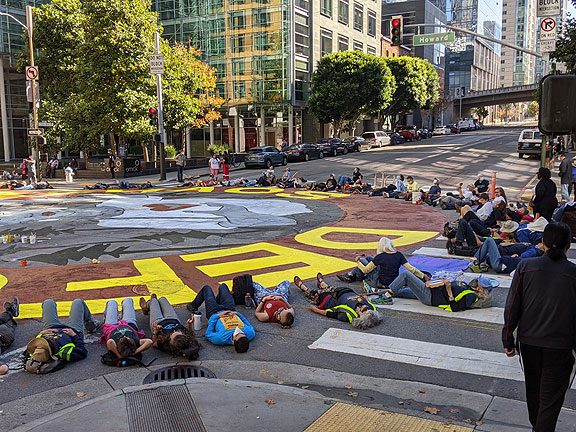
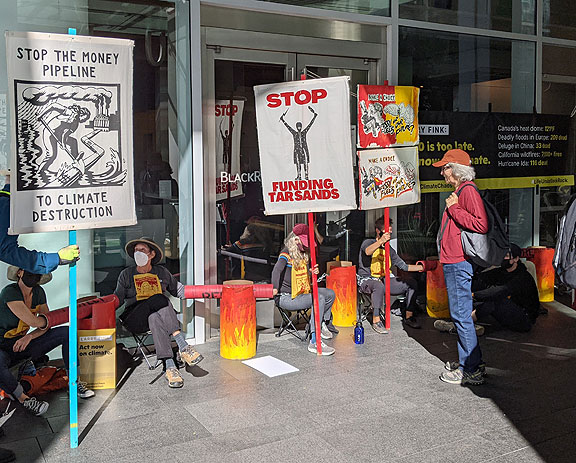
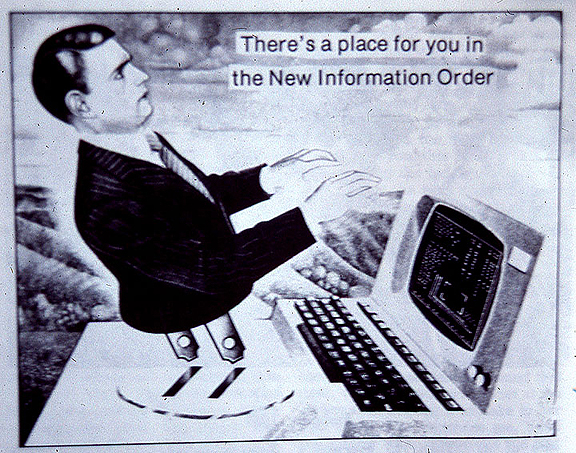
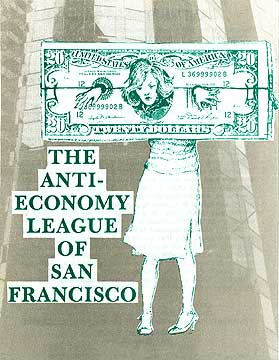
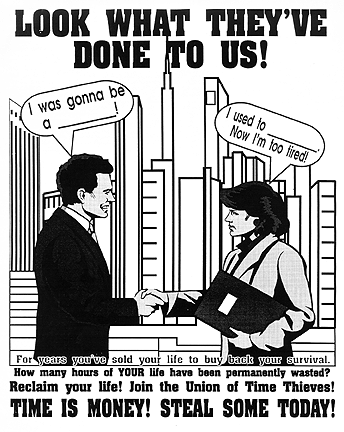
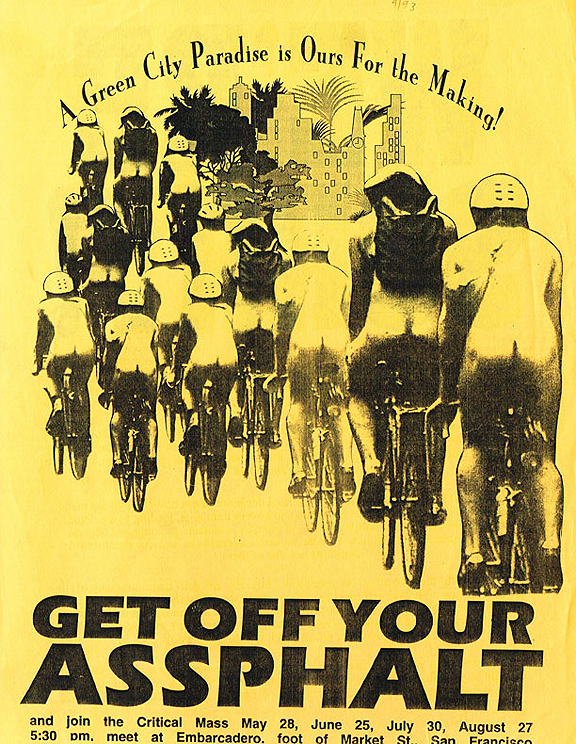


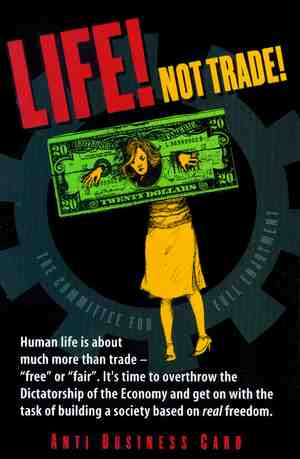

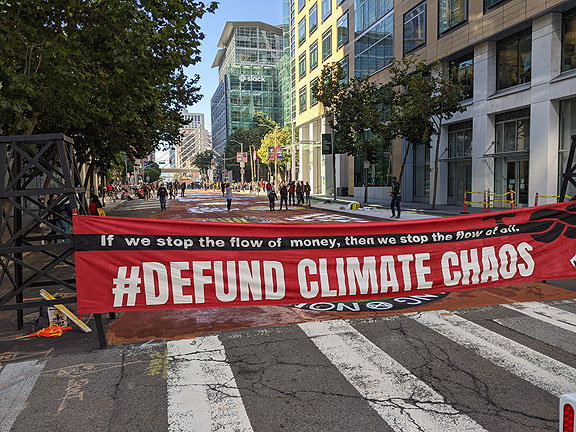











Hey Miguel, I never read Bullshit Jobs except in its original essay form… of course it seemed mighty close to what I’ve been saying for what, 40 years now? I did recently read and write about his book “The Utopia of Rules” which was good. https://nowtopians.com/technology/life-and-death-continues
I am looking forward to the new one, “The Dawn of Everything” with David Wengrow… reviews I’ve read lead me to believe that it will be kind of nonlinear and sprawling, but very entertaining and provocative… Hope to see you here or there!
Hope for the future.
Was just thinking of you when this popped up.
Have you read David Graeber’s books? “Bullshit Jobs”
Etc? What do you think?
Maybe but only maybe see you in 2022?
love your posts chris would enjoy more of them keep up the thinking and pondering great stuff peace